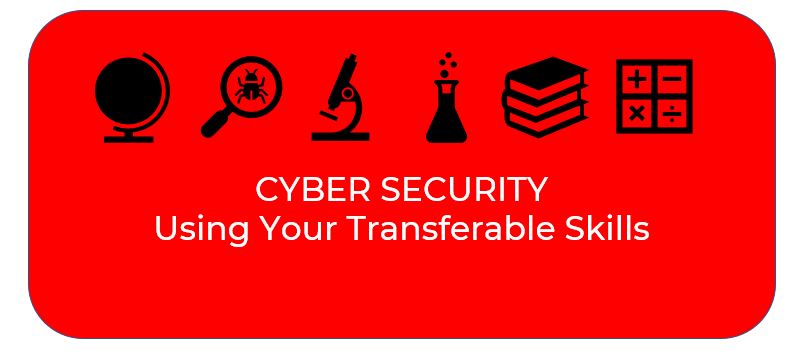Recently on LinkedIn there was an interesting post from a chap who was looking to help a young friend who was not doing well at school but was gifted with computers and wanted to get into the world of hacking and all things cyber-security.
He was looking to drop out of school to concentrate on IT and computers.
Although some very good responses came back in support and all of them had the best interests of the young person at heart – it made me stop to reflect that despite the fact that we are all good at some speciality subject – how important having a wide base of general knowledge also is and the fundamentals of this comes from the width of a school curriculum.
And even though you could excel in the world of hacking (hopefully ethical) and cyber security or whatever your specialism is – the core subjects that you learn at school, college or university will help and support you further. And it’s amazing how stuff you learned at school that you never thought would be useful – comes back to help at some point.
In the military this type of training was often called ‘transferable skills’
If you are an apprentice – you must hold functional skills in English and Maths. If for no other reason than the fact that you should be able to read, write and do calculations to a fundamental level. These skills will stay with you throughout life and I totally appreciate the fact that for some, these core skills don’t come easily and some people don’t thrive in a school classroom but do well in other environments.
But having a broad general knowledge outside of the world of computers also means that you are a person with people skills. As an ice-breaker on my apprenticeship classes – I give a list of things I want to know about my new delegates.
- Name
- Company
- Position within the company
- Previous qualifications/courses
- ‘Something you do outside of work that doesn’t involve a screen’ or ‘something you have done that you are proud of’
The final 2 options generally cause panic.
Having a range of interests and general knowledge also helps to you communicate, create reports and explain things.
Check this out:
In the world of cyber security – one area which we generally cover is the concept of ‘malware’.
Simply put, ‘malware’ is malicious software which you don’t want on your system. The malicious range of malware and impact varies on the type of software and system it effects and this concept can be difficult to comprehend.
We generally get it down into 3 categories:
- Virus
- Worm
- Trojan Horse
What’s the difference between the 3 of these?
We have all heard the terms before and some will know the answer. Others will be able to give a textbook definition of the answer (which is good enough for the test) but don’t really understand the difference. And so this is when an understanding of the terminology goes beyond the words in a book.
General knowledge helps.
Starting with a Trojan Horse – which is probably the easiest to understand.
Films, books and poems all depict the great myth and ruse by the Greeks, who after putting the city of Troy to siege for 10 years feigned surrender and retreated, leaving a huge wooden horse outside of the gates of the city as a gift to the Trojans for their splendid victory. You might know the story.
Once the Trojans were satisfied that the Greek army had scarpered they willingly opened up the gates and pulled the horse inside. Unfortunately for them that also allowed in a band of Greek elite soldiers who were hidden inside the horse and were able, under cover of darkness, to open up the defences of the city to the returning Greek forces.
A Trojan or Trojan Horse is not a virus but a destructive program which looks like a genuine application.
Once allowed in (by clicking on a link or downloading the file willingly) it is able to release its payload which either takes control of your system or opens up a backdoor to allow for other malware to come in.
The rest is history (but unfortunately not mythical).
Covid-19 is a virus. You might have heard of it.
Covid-19 is malicious and spreads by being attached to water droplets (coughs, sneezes and bodily fluids) and other particles. It can be easily transmitted from one system to another – especially when there are no protective barriers in place and once inside a system is able to spread quickly. It is particularly nasty in older and vulnerable systems which may already have some kind of infection or have a weak immune system and those that don’t bother to protect themselves and immunise against it. Its impact on the system will depend on the system – it might be very minor or it may be catastrophic.
Defences include isolation, separation (social distancing), masks, screens, tests and jabs and also …… knowledge and awareness.
A computer Virus works in EXACTLY the same way. It needs a ‘host’ to attach to (a file) in order to infect and spread from system to system but once inside it will find out vulnerabilities. Those systems which are well maintained and patched will have a good defence against it and those that also have anti-virus software running will have the most up to date protection against it.
But like all viruses – new variants continue to evolve and you need to maintain your system protection to keep up with these evolutions. However, you can never be 100% protected – but that doesn’t mean you shouldn’t try.
The problem with social distancing and lockdowns is that they are no fun. So if you want to roam around in the outside world – you either need to be protected or accept the risk.
So what about a worm?
If you are lucky enough to have a garden – try this out.
Go to you local garden centre and buy a flower pot, bag of compost (peat free of course) and a nice flower or plant of your choosing.
Pot up the plant – in the new pot with the nice clean compost. Water it in and place it on your lawn, patio or border to suit your needs. Keep it fed and watered for a couple of weeks and bask in the glory of your Monty Don skills.
After a couple of weeks – carefully remove the flower/plant and try not to damage the roots and have a rummage around the compost. There is a very good percentage chance that you will find an earthworm in it. Especially if you left it on the lawn or in the borders. If you live in a high rise block of flats, 25 stories up – perhaps less chance (but you never know!).
So how did the worm get there?
Well first of all – under its own steam. It crawled in itself (unless it was dropped by a bird) or you inadvertently mixed in other soil which had a worm in it.
It either crawled up the side of the pot or (more probably) came in through the hole in the bottom of the pot which allows for the water to drain out. As that’s the easiest route in and out.
Did you spot that hole in the pot when you bought it? Perhaps you had the forethought to put one in as it’s a necessary feature for pot-plants (ask Monty).
So this ‘necessary evil’ has let a worm into your flower-pot without your knowledge. The good news is of course that worms are good for the soil – so no plants were harmed in this experiment. (As long as you re-potted it after digging it up!)
Another great experiment with worms is to get a wormery for the kids (big kids included). These sometimes come with a glass front so you can see the worms in action.
Layer in different types of soil. Sand, soft compost, clay soils, stony soil etc. Pop in a couple of earthworms – don’t forget to put some vegetation on the top layer for them to eat.
After a couple of days the worms will have worked through the layers of soil to create patterns (it’s like living art!) – but then take a closer look.
Which soil types to they prefer to move through? What happens when they come to an obstacle (rock, hard clay etc). That’s correct – they simply find the softer soil and go round it themselves. They also poke holes in the top to feed and invite in other worms! Worms are great.
Computer Worms are not great and are a class of virus. However unlike a true virus – it doesn’t need a host to spread from one system to another and it can move autonomously. Not only that – but they can seek out vulnerabilities quickly and also reproduce at an alarming rate if left unchecked. Unlike an earthworm which are generally good for a plant system – the computer variety are not so welcome.
The hole in the flower pot was either unknown or put in deliberately to serve a purpose. Think about how many ‘holes’ or intrusion points your computer has – applications which are constantly communicating, web connections, file transport system – the list is endless. Some of these connections we know and understand as we put them in place by setting up Email or Web Browsers – others remain unknown and potentially un-detected.
Occasionally it’s a good idea to check what’s installed and running and if you no longer need it – turn it off or delete it. Plug the holes in other words.
Regardless of whether its Virus, Worm or Trojan – we need to protect our systems.
System Updates, Maintenance, Anti-Virus, Firewalls, Intrusion Detection Systems, scanning and testing are all great technical controls for defence.
But the best defence of all ….. User Training and Awareness (Knowledge and transferable skills)
I love computers. But in this post I have called on some classroom subjects:
- Classical Greek Mythology
- Literature
- History
- Science
- Chemistry
- Virology (New in 2020!)
- Biology
- Geology
- Zoology
- Horticulture (Rural Science in my day!)
- Current Affairs (Social Science)
- Media Studies (Wasn’t invented in my day!)
And Cyber Security (not taught at my old school – but I know a place that does this well!)







